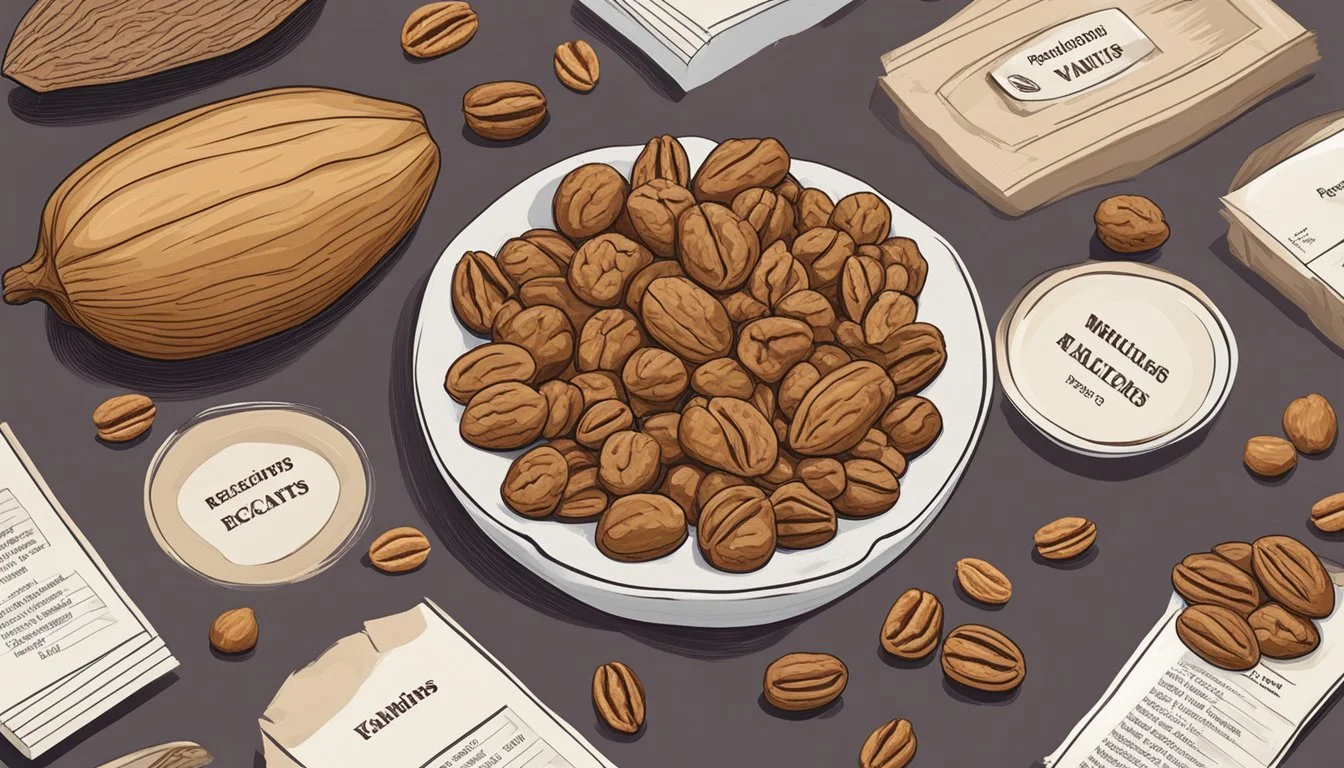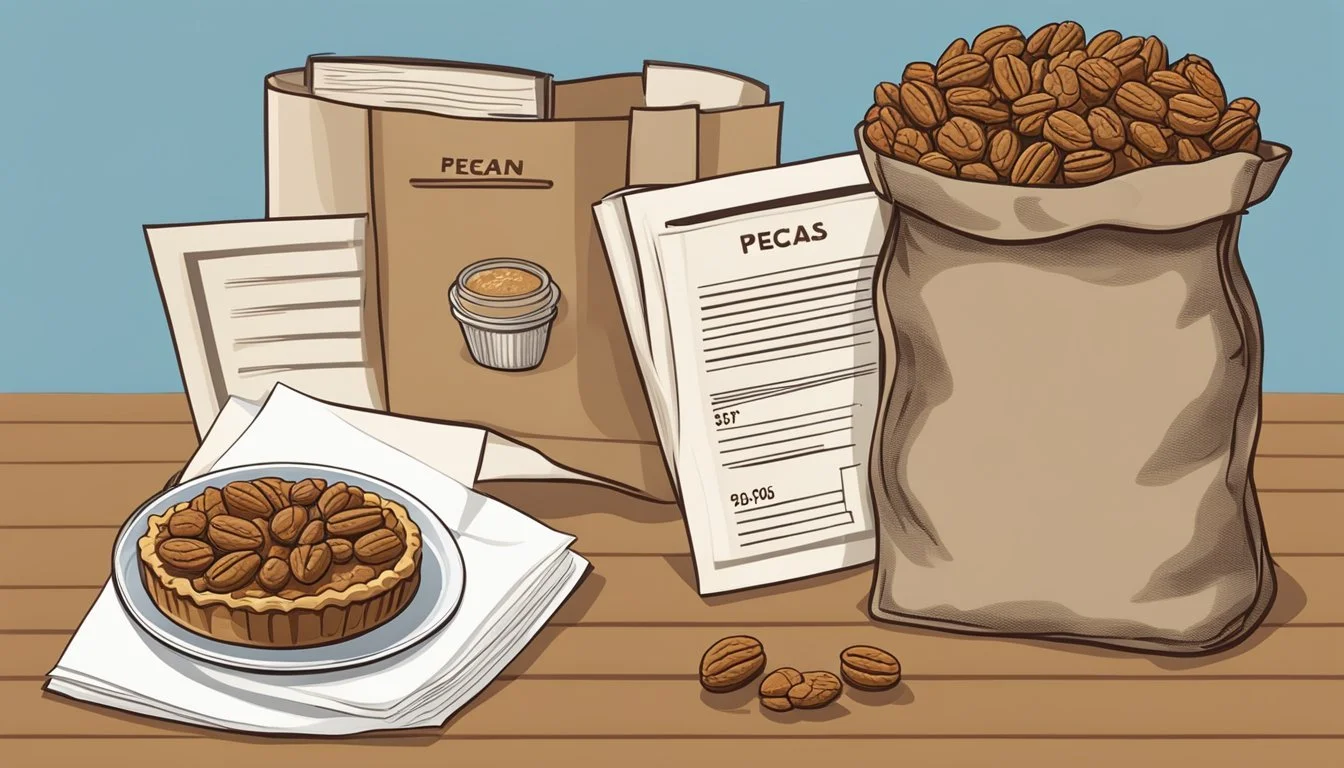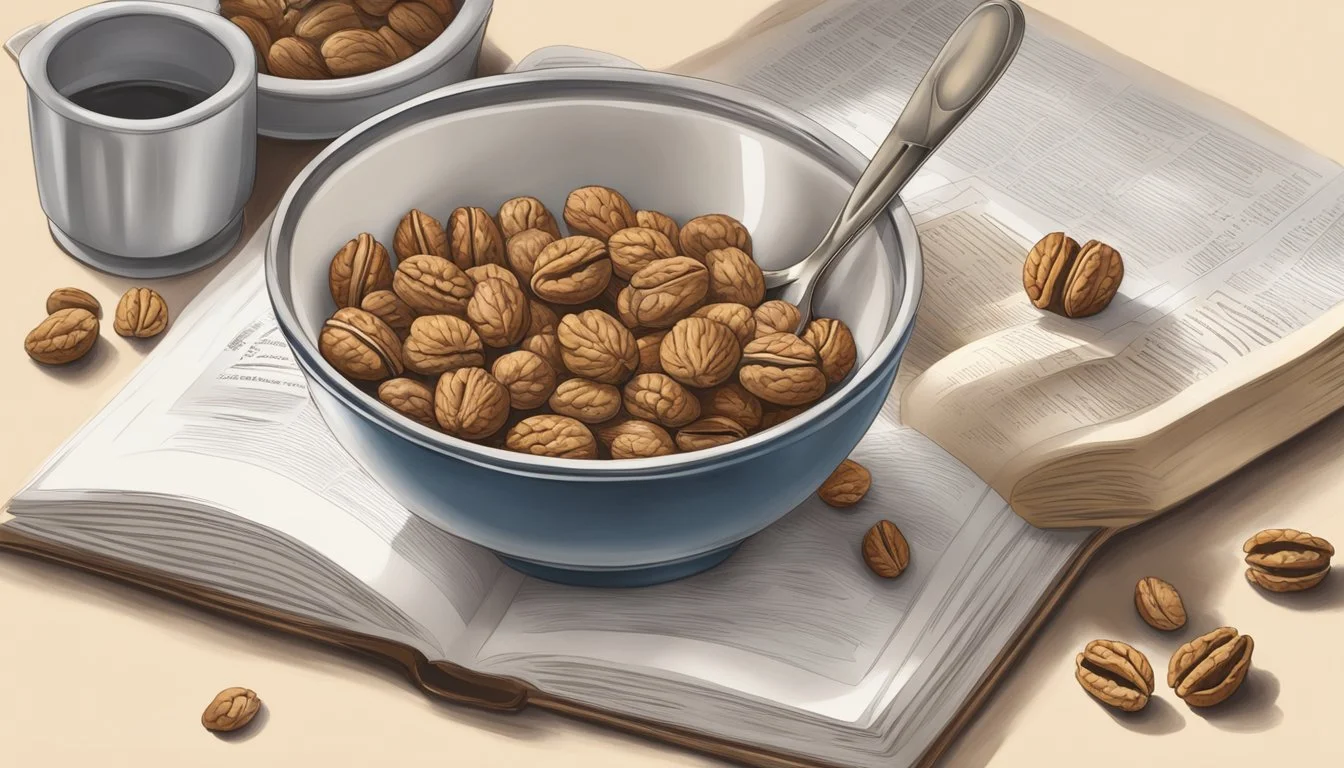How to Substitute Walnuts for Pecans
A Simple Guide for Baking and Cooking
Substituting walnuts for pecans is a common practice in cooking and baking, offering a practical solution when pecans are unavailable or when seeking a change in flavor or cost-effectiveness. Both nuts share a rich, nutty essence that infuses a similar aromatic depth into dishes. The versatility of walnuts makes them an excellent replacement, adept at complementing the taste and texture profile in recipes traditionally calling for pecans.
Understanding the subtle differences between these two nuts can be important for ensuring the desired outcome in a recipe. While walnuts have a slightly more bitter taste compared to the sweeter and buttery pecans, their similarity in size, shape, and texture allows them to fulfill the same culinary role. Walnuts are particularly effective substitutes in baked goods like cookies, breads, and brownies, where they can contribute to the overall flavor and crunch.
Chefs and home cooks often lean towards walnuts as a substitute due to their accessibility and lower price point, without significantly altering the final product. It should be noted, however, that when replacing pecans with walnuts, the nuanced flavor differences might slightly change the dish's taste. Nonetheless, walnuts are widely accepted as a reliable stand-in, capable of achieving the desired result whether the recipe is savory or sweet.
Understanding Nut Substitution
In selecting suitable nut substitutes, one must consider taste, texture, and nutritional value to maintain the integrity of the dish. Substitutes can vary based on individual health needs and taste preferences.
Why Substitute Walnuts for Pecans
Individuals may choose to substitute walnuts for pecans for a variety of reasons:
Allergies: Some people may be allergic to pecans but not to walnuts.
Taste Preferences: Pecans have a slightly sweeter and richer flavor, while walnuts offer a more earthy note, appealing to different taste buds.
Availability & Cost: Walnuts may be more readily available or cost-effective compared to pecans in some regions.
Culinary Considerations for Nut Substitutes
When substituting walnuts for pecans, several culinary aspects are important:
Flavor: Walnuts can impart a similar nutty flavor but with a distinct profile different from pecans. It may be milder and less sweet.
Texture: Both nuts have comparable textures, though walnuts are a bit denser, which should be considered in recipes requiring specific textures.
Nutritional Value: While their nutritional profiles are similar, with both being good sources of healthy fats and protein, walnuts have a higher omega-3 content, which can be a consideration for health-conscious consumers.
By considering these factors, one can make informed decisions when substituting nuts in culinary applications, ensuring desired outcomes in both flavor and texture.
Nutritional Profile Comparison
When substituting walnuts for pecans in recipes, understanding the nutritional differences is crucial as it impacts both the health benefits and the end result of the dish. Both nuts are rich sources of vitamins, minerals, and healthy fats, although they each have distinct nutritional profiles.
Walnut Nutrition
Walnuts are particularly known for their high content of omega-3 fatty acids, which are essential for heart health. A typical serving of walnuts (1 ounce) provides:
Protein: Approx. 4 grams
Healthy fats: High in polyunsaturated fats, including omega-3s
Fiber: About 2 grams
Antioxidants: Especially high in antioxidants
Vitamin E: Vital for immune function
Potassium: Contributes to heart and muscle health
Iron: Important for red blood cell formation
Pecan Nutrition
Pecans offer a significantly higher calorie count due to their higher fat content but are an excellent source of monounsaturated fats, which are beneficial for heart health. In a similar serving size (1 ounce) of pecans, one can find:
Protein: Just over 2.5 grams
Healthy fats: Rich in monounsaturated fats and moderately high in polyunsaturated fats
Fiber: Around 3 grams
Antioxidants: Contains more than 19 vitamins and minerals
Vitamin E: Helps combat oxidative stress
Potassium: Less than walnuts, but still a good source
Iron: Present in small amounts
Both walnuts and pecans contain these essential nutrients, albeit in different proportions. When substituting one for the other, one should consider these nutritional variations.
Using Walnuts in Specific Recipes
When substituting walnuts for pecans, it's important to consider the role the nuts play in the recipe. Walnuts can generally be swapped in equal amounts for pecans and are well-suited for most baking and cooking applications, offering a similar texture and comparable flavors.
Baking with Walnuts
In the case of baking, walnuts can impart a nutty flavor comparable to pecans. They work particularly well in recipes where the pecan is not the sole star, such as:
Cookies and brownies: For recipes calling for pecans, like chocolate chip cookies or brownies, walnuts can be used in the same quantity.
Cakes and muffins: For cakes, especially those with a denser crumb like carrot or banana cake, walnuts offer a pleasing texture.
In pies, such as the classic pecan pie, walnuts can substitute the pecans to give a different twist on the traditional dessert. However, the distinctive flavor of pecans is a hallmark of certain recipes like pecan pie, so expect a slightly altered taste profile with walnuts.
Cooking with Walnuts
When it comes to cooking savory dishes, walnuts can replace pecans to add a crunchy element and richness to salads and protein accompaniments. Below are specific uses of walnuts in cooking:
Salads: Toasted walnuts can be sprinkled over salads for added crunch and nutrition. They work particularly well in dishes that also feature fruit, cheese, or a balsamic vinaigrette.
Savory dishes: Walnuts can be used as a topping or ingredient in grain dishes, stuffed vegetables, or as part of a crust for meats.
In recipes where pecans are paired with savory flavors like herbs or cheese, walnuts can serve as a buttery alternative, although they have a slightly different flavor profile that is earthier than pecans.
Textural and Flavor Considerations
When substituting walnuts for pecans, one must take into account the textural nuances and flavor complexities each nut brings to a dish.
Comparing the Crunch
Walnuts and pecans both offer a crunchy element to dishes, but their textures are distinguishable. Walnuts tend to have a slightly rougher, more craggy texture, which can affect the mouthfeel in a recipe. Pecans, in contrast, have a softer crunch and can almost feel buttery when bitten into. The physical structure of pecan halves is also more uniform, which could be notable in recipes where the appearance of the nuts is integral.
Flavor Profiles of Walnuts and Pecans
The flavor of walnuts is rich and earthy, with a slightly bitter aftertaste, making them well-suited for savory and sweet dishes alike. Pecans impart a comparable rich flavor but tend to be sweeter and possess a certain buttery quality. This sweetness is enhanced because pecans contain more oil, specifically pecan oil, contributing to a moister texture and richer mouthfeel. The subtle flavor differences should be considered when walnuts are used in place of pecans, as it may alter the intended outcome of the recipe slightly.
Practical Tips for Substituting Walnuts
When replacing pecans with walnuts, it is crucial to consider factors such as quantity and texture to maintain the integrity of the original recipe. Two key aspects to focus on are the ratios used in measurement and any necessary adjustments to recipes.
Measuring and Ratios
In most recipes, walnuts can be substituted for pecans in a 1:1 ratio. This means that if a recipe calls for one cup of pecans, one can also use one cup of walnuts. However, due to the size difference – walnuts are typically larger – they should be chopped to match pecans' size to ensure even distribution throughout the dish.
Adjusting Recipes
While walnuts are a versatile alternative to pecans and function similarly in recipes by providing a comparable nutty flavor and crunch, slight adjustments may be required. Given that walnuts have a slightly more bitter taste than the rich and sweet profile of pecans, the person preparing the dish might consider toasting the walnuts to enhance their flavor.
For those with nut allergies or preferences, pumpkin seeds and sunflower seeds are excellent nut-free alternatives that still deliver a satisfying crunch. These seeds can be measured using the same quantity as walnuts and added directly to recipes like salads or baked goods.
Cost and Availability
When substituting walnuts for pecans, consumers often consider both cost and availability. Both nuts are typically available, but there are variations in price and seasonal accessibility that are notable.
Price Comparison
Nut Type Average Market Price Pecans Higher Walnuts Lower
Pecans usually command a higher price in the market compared to walnuts. This price difference is due to several factors, including cultivation costs and yield per hectare. Budget-conscious buyers often opt for walnuts when cost becomes a significant decision factor.
Seasonal Availability
Pecans have a specific harvest season, which usually peaks in the fall. Outside of this season, they can be less abundant or more expensive due to storage and distribution costs. On the contrary, walnuts are generally available year-round, contributing to their steadier pricing and making them an attractive alternative for those who prioritize availability.
Allergen Information
When considering a substitution for walnuts in recipes due to nut allergies, it is important to understand the specific nature of the allergy. Tree nuts are a common allergen, which includes both walnuts and pecans. If a person has an allergy to walnuts, they are likely to be allergic to pecans as well since they belong to the same nut family.
For those with tree nut allergies, a safe alternative is to opt for seeds that do not trigger allergic reactions. Some of the recommended options include:
Sunflower seeds: A versatile seed that can be used whole or ground.
Pumpkin seeds: Another suitable alternative, providing texture and flavor.
Chia seeds: Best suited for baked goods when used ground.
It is essential to handle these substitutes with care to avoid cross-contamination with nuts. One should ensure that the seeds are processed in a facility free from tree nuts to maintain allergen safety.
Substitute Best Used for Sunflower seeds General cooking and toppings Pumpkin seeds Textured baking and confections Chia seeds Baking when ground
Always check the labels for any mention of tree nuts to ensure these alternatives are truly safe for those with allergies. As with any dietary restriction, consulting with a healthcare provider is recommended for personalized advice.
Alternative Nut and Seed Options
When substituting walnuts for pecans, one has a variety of nuts and seeds to choose from, each capable of providing a different flavor and texture profile to the dish.
Other Nut Substitutes
In terms of nut alternatives, several options closely mimic the rich flavor and crunchy texture of walnuts. Here are some specific nut substitutes:
Hazelnuts: These offer a distinctly bold taste and are usually best matched with chocolate or baked goods.
Almonds: A commonly available substitute, almonds can be used blanched or with the skin on for added texture.
Cashews: With a softer texture, cashews are ideal in creamy recipes or when a more subtle nutty presence is desired.
Pistachios: Their unique green hue adds visual appeal alongside their delicate flavor, particularly in pastries and salads.
Brazil Nuts: With a similar creaminess to walnuts, these nuts are an apt substitute in larger baked goods due to their size.
Macadamia Nuts: They bring a buttery flavor and are particularly suitable for cookies and sweet treats.
Pine Nuts: Their small, buttery kernels are excellent in pesto or as a crunchy garnish.
Peanuts: Unsalted peanuts may serve as a more savory alternative, though their distinct taste may slightly alter the intended flavor profile.
Seed-Based Alternatives
Seeds can be a great alternative for those looking for nut-free options, offering varying textures and nutritional benefits. Seed substitutes that work well in place of walnuts include:
Pumpkin Seeds: They have a pleasing crunch and can be used whole for a satisfying bite.
Sunflower Seeds: Smaller and more versatile, sunflower seeds can be sprinkled into a variety of dishes for added texture.
Sesame Seeds: Best suited for topping breads or rolls, they add a subtle nuttiness and a delightful crunch.
Chia Seeds: These are best used in puddings and smoothies, as they develop a gel-like consistency when wet.
Flax Seeds: Ground flax seeds can be a substitute for walnuts when a softer texture is required, such as in muffins or other baked items.
Additional Considerations for Nut Substitutes
When substituting walnuts for pecans, it's crucial to consider the recipe's dietary requirements and the cultural preferences of the intended audience. Specific ingredients may be added or exchanged to maintain the integrity of the dish within these contexts.
Nut Substitution in Diet-Specific Recipes
In diet-specific recipes, such as those tailored for heart health, the choice of nuts can be significant. Walnuts, in particular, are known for their beneficial omega-3 fatty acids. When substituting walnuts for pecans in sweet treats or baked goods, it's important to adjust added ingredients to compensate for flavor differences. Walnuts, which can be both the English walnut or the slightly bitter black walnut variety, might require additional sugar or sweetening agents to balance their flavor profile in pecan cookies or tarts. For savory dishes, swapping in vegetables or adding a dollop of yogurt might complement the nuttier tone walnuts provide compared to the sweeter pecan.
Cultural and Regional Preferences
Considering cultural and regional preferences ensures the substitute nut aligns with traditional tastes. For example, pecans are a staple in North American and particularly Mexican cuisine, often found in caramel desserts (What wine goes well with caramel desserts?) or in the rich filling of pecan pies. In such cases, walnuts can be used, but a careful approach to maintain family cooking traditions is crucial. One must also be mindful of budget-friendly options; walnuts are often less expensive and more accessible than pecans, making them a practical alternative in various culinary uses. Substitutes like pecan flour in pancakes may need a budget-conscious yet healthful option like oatmeal to sustain the nutritional value while respecting cultural influences on the dish.










